Safety Advocates Getting Testy Over Automotive Apps, Consumer Data

Automakers began hunting for new revenue streams about two milliseconds after realizing they could put the internet into vehicles. While the earliest endeavors involved ride-sharing applications and new infotainment features, companies are now beginning to see new opportunities via automotive e-commerce, data acquisition, and in-car marketing.
However, the delivery system used for these new sources of revenue pose a legitimate safety concern. Distracted driving is on the rise and shopping while behind the wheel isn’t likely to remedy the situation.
It’s an issue that’s been simmering on the back burner for a while now. Last year, General Motors became the first major automaker to launch a cadre of app-based services through its Marketplace interface. As of December, customers can order food, pay for gas, or make hotel reservations while driving. Prior to that, GM expressed an interest in adapting OnStar to deliver “personalized marketing offers.”
While our biggest gripe with that idea was that it was yet another step toward commodifying customer information and rampant in-car marketing, we’ve also prattled on about the potential safety problems associated with pecking away at your infotainment display when your eyes should be on the road. General Motors countered this by saying Marketplace was specifically designed to be safer and more convenient than using your phone. Of course, using the automaker’s proprietary tech to order goods and services also results in it getting paid through carefully chosen partnerships with various outlets.
Other companies took notice of how technology could be used to funnel customers down the financial avenues of their choosing. Hyundai is currently developing its own version of GM’s Marketplace, while other automakers are feverishly seeking partnerships for their own e-commerce endeavors. But they’ll all function roughly the same way: an app-based payment plan affixed to the dashboard.
In a recent report, The Wall Street Journal claims safety advocates have also taken notice, and don’t like what they see. After years of steady declines, the number of U.S. road fatalities increased in both 2015 and 2016. Safety groups believe the rise is likely driven by the inherent distractions associated with smartphones and in-car infotainment systems. While we’re also willing to entertain the idea that advanced driving aids allow motorists to further tune out while behind the wheel, dulling their driving skills, it’s a concern that’s much more difficult to quantify and remedy. Apps are a little easier to vilify. If they’re there, someone is probably going to get distracted by them.
“[Car companies] are trying to build cars that are like phones, rather than acknowledging that if you’re driving, you shouldn’t be trying to do these tasks at all,” said National Safety Council President Deborah Hersman.
According to the latest statistics available from the National Highway Traffic Safety Administration, distracted driving is believed to have contributed to 3,450 fatalities in 2016 — about 9 percent of the 37,461 road deaths record that year. However, the actual number could be higher, as it’s often difficult to prove distracted driving was the underlying cause of an accident.
Further complicating things is just how dangerous in-car apps are when compared to whipping out a smartphone. Most of General Motors’ Marketplace services are intentionally streamlined to minimize the number of interactions while making a purchase. On the one hand, this is a good way to get someone to finalize an order. But it’s also a half-decent way to keep someone from spending more time than necessary futzing around with an app while the ground beneath them flies past at a mile per minute.
In a pinch, it’s probably better to have someone interacting with a larger device offering fewer choices and mounted nearer to the windshield than looking down at their phone. But stopping is always the safer alternative, and then it doesn’t really matter what device you’re using to order dinner.
Regardless, you’re likely going to have to exercise some self-restraint while behind the wheel, as app-based services are coming to cars en masse over the coming years. You’re also going to have to contend with those privacy concerns we’re always talking about.
From The Wall Street Journal:
The auto industry’s move into e-commerce is still in early stages, but auto makers see it as part of a broader bid to monetize connected-car data and services, which McKinsey & Co. forecasts could generate global revenue of $750 billion by 2030.
With more cars rolling off dealer lots with built-in internet connections, the opportunity to add more retailing services will only grow over time, say auto executives and analysts. They also expected demand for such capabilities to increase as driverless technologies advance, freeing drivers to perform other tasks on the road.
Auto makers’ efforts to harness data to build new services is likely to raise privacy concerns, especially amid heightened scrutiny over Facebook Inc. and Alphabet Inc.’s handling of consumer data.
Facebook and Google have both grown incredibly fat from managing consumer data, and they haven’t been completely responsible or objective in how they’ve handled things. It’s also worth considering how rampant online advertising has become over the past five years. The world’s biggest social media outlets are now completely saturated with ads, YouTube continues sneaking in more un-skippable commercials, and Google steers vast amounts of data as it sees fit (despite growing scrutiny). That could all start occuring inside your car.
GM claimed it would use any data accumulated from Marketplace to track trends among large numbers of users, but would hold off on sharing individual users with retailers. However, Mark Zuckerberg also said Facebook would never sell or share user data in 2009. Things change.
Even though we’re approaching that bridge quickly, we’ll cross it once we get there. In the meantime, the matter of distracted driving has to be addressed. While connected vehicles open up new avenues of convenience (like networking with home devices or allowing for a more convenient way to pay for fuel), they’ve also opened up a pandora’s box. The danger is real for those who can’t keep themselves from interacting with touch screens. Because of this, we’ll need to decide whether or not something should be done.

A staunch consumer advocate tracking industry trends and regulation. Before joining TTAC, Matt spent a decade working for marketing and research firms based in NYC. Clients included several of the world’s largest automakers, global tire brands, and aftermarket part suppliers. Dissatisfied with the corporate world and resentful of having to wear suits everyday, he pivoted to writing about cars. Since then, that man has become an ardent supporter of the right-to-repair movement, been interviewed on the auto industry by national radio broadcasts, driven more rental cars than anyone ever should, participated in amateur rallying events, and received the requisite minimum training as sanctioned by the SCCA. Handy with a wrench, Matt grew up surrounded by Detroit auto workers and managed to get a pizza delivery job before he was legally eligible. He later found himself driving box trucks through Manhattan, guaranteeing future sympathy for actual truckers. He continues to conduct research pertaining to the automotive sector as an independent contractor and has since moved back to his native Michigan, closer to where the cars are born. A contrarian, Matt claims to prefer understeer — stating that front and all-wheel drive vehicles cater best to his driving style.
More by Matt Posky
Latest Car Reviews
Read moreLatest Product Reviews
Read moreRecent Comments
- Lou_BC Well, I'd be impressed if this was in a ZR2. LOL
- Lou_BC This is my shocked face 😲 Hope formatting doesn't fook this up LOL
- Lou_BC Junior? Would that be a Beta Romeo?
- Lou_BC Gotta fix that formatting problem. What a pile of bullsh!t. Are longer posts costing TTAC money? FOOK
- Lou_BC 1.Honda: 6,334,825 vehicles potentially affected2.Ford: 6,152,6143.Kia America: 3,110,4474.Chrysler: 2,732,3985.General Motors: 2,021,0336.Nissan North America: 1,804,4437.Mercedes-Benz USA: 478,1738.Volkswagen Group of America: 453,7639.BMW of North America: 340,24910.Daimler Trucks North America: 261,959





















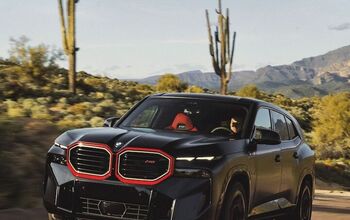
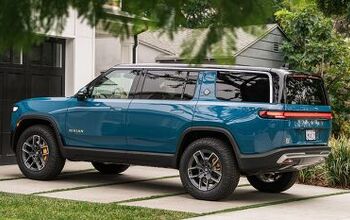

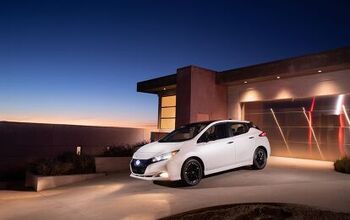

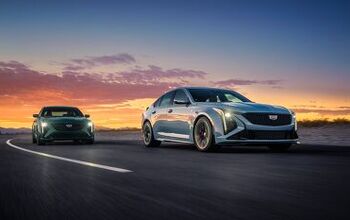
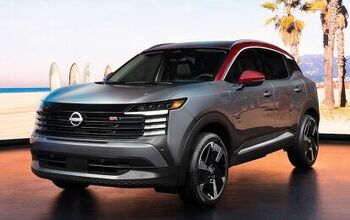



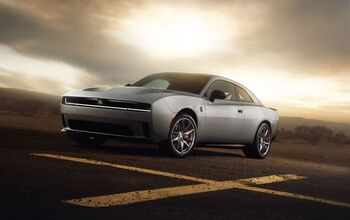


Comments
Join the conversation
It's rather insidious. We were conditioned to fiddle with the knobs on the radio (or push one of five buttons) and adjust the heater in the old days. Then we could eat hamburgers and drink Cokes while we drove. Next thing you knew we were digging in the glovebox for a new tape to listen to, then CDs, so it's logical for people to think they do no harm by programming something on the fly that's more complicated than what was used to navigate space capsules.
I can't wait to help my 73 year old mother enter her email address and complex password into her GMC Jimmy (as my dad calls it, it's really a Terrain) so she can make hotel reservations. Uh, no thanks. This is a horrendously stupid idea.